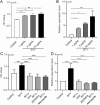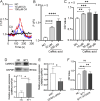Role of Ca2+/calmodulin and PI3K/AKT signaling pathways and active ingredients of BaoTaiYin in treatment of recurrent miscarriage
- PMID: 40201242
- PMCID: PMC11975862
- DOI: 10.3389/fmolb.2025.1573294
Role of Ca2+/calmodulin and PI3K/AKT signaling pathways and active ingredients of BaoTaiYin in treatment of recurrent miscarriage
Abstract
Introduction: BaoTaiyin (BTY) is a traditional Chinese medicine decoction. It has been used to treat recurrent miscarriage (RM). However, there are no comprehensive systematic studies to identify the chemical compositions of BTY and molecular mechanisms on RM. Finding the chemical components of BTY and clarifying the underlying processes in the treatment of RM were the goals of the study.
Methods: We used ultra-high-performance liquid chromatography coupled with triple quadruple time-of-flight tandem mass spectrometry to analyze the chemical components of BTY, network analysis to predict the pharmacological effects of the identified active ingredients, and cell experiments to identify potential molecular mechanisms.
Results: We found 12 active ingredients among 61 components identified in BTY. These identified activities were linked to regulatory effects on 127 key signaling pathways, targeting 107 proteins. Through network analysis, we determined that insulin-like growth factor 1 receptor, matrix metalloproteinases, PI3K, and STAT3 may be the core targets of BTY's therapeutic effects on RM. We further explored this mechanism to find that aqueous extracts of BTY significantly enhanced IGFBP2 and CaMKK2 expression and trophoblast proliferation, whereas inhibitors of IGF1R/PI3K/AKT pathway or CaMKK2 blocked the effect of BTY on trophoblast proliferation. In addition, IGFBP2 siRNA suppressed BTY-induced CaMKK2 expression. Caffeic acid, as one of components of BTY, increased intracellular Ca2+ concentration and proliferation in trophoblast.
Conclusion: Our research showed that BTY may have therapeutic benefits on RM through multiple targets and pathways, such as the IGF1R/PI3K/AKT and Ca2+/calmodulin signaling pathways.
Keywords: BaoTaiYin; Ca2+ signal; mass spectrometry; proliferation; recurrent miscarriage; trophoblast proliferation.
Copyright © 2025 Ji, Deng, Chen, Guo, Wang, Zhang, Chen, Fan, Jiang and Shen.
Conflict of interest statement
The authors declare that the research was conducted in the absence of any commercial or financial relationships that could be construed as a potential conflict of interest.
Figures









Similar articles
-
Using ultra-performance liquid chromatography with linear ion trap-electrostatic field orbitrap mass spectrometry, network pharmacology, and molecular docking to explore the constituent targets and action mechanisms of decoction of Angelica sinensis, Zingiberis Rhizoma Recens, and Mutton in the treatment of diarrhea-predominant irritable bowel syndrome.J Pharm Pharmacol. 2024 May 3;76(5):462-478. doi: 10.1093/jpp/rgad076. J Pharm Pharmacol. 2024. PMID: 37832514
-
Investigating the efficacy and mechanisms of Jinfu'an decoction in treating non-small cell lung cancer using network pharmacology and in vitro and in vivo experiments.J Ethnopharmacol. 2024 Mar 1;321:117518. doi: 10.1016/j.jep.2023.117518. Epub 2023 Nov 30. J Ethnopharmacol. 2024. PMID: 38042385
-
Gleditsiae Sinensis Fructus ingredients and mechanism in anti-asthmatic bronchitis research.Phytomedicine. 2024 Oct;133:155857. doi: 10.1016/j.phymed.2024.155857. Epub 2024 Jul 11. Phytomedicine. 2024. PMID: 39074420
-
Experimental Verification of Erchen Decoction Plus Huiyanzhuyu Decoction in the Treatment of Laryngeal Squamous Cell Carcinoma Based on Network Pharmacology.Integr Cancer Ther. 2024 Jan-Dec;23:15347354241259182. doi: 10.1177/15347354241259182. Integr Cancer Ther. 2024. PMID: 38845538 Free PMC article.
-
Role of increased IGFBP2 in trophoblast cell proliferation and recurrent spontaneous abortion development: A pilot study.Physiol Rep. 2024 Feb;12(3):e15939. doi: 10.14814/phy2.15939. Physiol Rep. 2024. PMID: 38316422 Free PMC article.
References
-
- Albaghdadi A. J. H., Xu W., Kan F. W. K. (2024). An immune-independent mode of action of tacrolimus in promoting human extravillous trophoblast migration involves intracellular calcium release and F-actin cytoskeletal reorganization. Int. J. Mol. Sci. 25, 12090. 10.3390/ijms252212090 - DOI - PMC - PubMed
LinkOut - more resources
Full Text Sources
Miscellaneous

